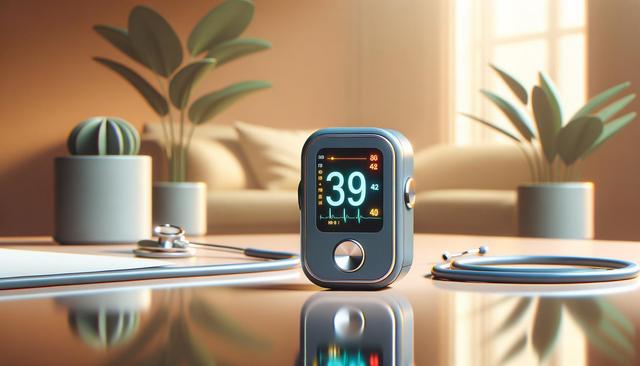What is a Pulse Oximeter?
A pulse oximeter is a portable medical device designed to measure the oxygen saturation (SpO2) level in a person’s blood, along with their pulse rate. It works by emitting light through a part of the body, usually a fingertip or earlobe, and detecting how much light is absorbed by the blood. This absorption varies depending on how much oxygen the blood is carrying. Pulse oximeters are often used in hospitals, clinics, and increasingly in home settings to monitor respiratory conditions such as chronic obstructive pulmonary disease (COPD), asthma, and even during recovery from respiratory infections.
The compact size and ease of use make it an accessible tool for individuals and caregivers alike. Simply placing the device on a finger and waiting for a few seconds can provide a fairly accurate reading. While it’s not a replacement for more comprehensive medical evaluations, it can provide valuable insights into a person’s respiratory health and prompt timely medical attention when necessary.
How Pulse Oximeters Work
The technology behind pulse oximeters is based on photoplethysmography, which measures changes in blood volume using light absorption. The device uses two light wavelengths—red and infrared—to determine the level of oxygen in the blood. Oxygenated and deoxygenated hemoglobin absorb light differently, allowing the device to calculate the percentage of oxygenated blood.
Here’s a simple breakdown of the process:
- The device emits red and infrared light through the fingertip.
- Sensors on the other side measure how much light passes through.
- The absorption data is analyzed to determine SpO2 levels.
- The pulse rate is also measured based on blood flow changes.
Most pulse oximeters provide real-time readings and can alert the user if oxygen levels fall below a certain threshold, usually around 90%, which may indicate hypoxemia. These devices are particularly useful for individuals with chronic respiratory issues or those recovering from surgeries that affect lung function.
Common Uses in Healthcare and Home Settings
Pulse oximeters have a broad range of applications in both clinical and non-clinical environments. In hospitals, they are part of standard monitoring for patients under anesthesia or those admitted to intensive care units. In outpatient and home settings, they are useful for routine checks and managing long-term health conditions.
Some of the most common uses include:
- Monitoring oxygen levels in patients with respiratory illnesses
- Assessing the effectiveness of supplemental oxygen therapy
- Tracking pulse and oxygen saturation during physical activity
- Supporting remote patient monitoring for chronic conditions
For individuals interested in proactive health management, especially those with known respiratory issues, having a pulse oximeter at home can offer peace of mind. It allows for early detection of potential problems, enabling quicker medical response when necessary.
Factors to Consider When Using a Pulse Oximeter
While pulse oximeters are generally reliable, several factors can affect the accuracy of their readings. Understanding these variables can help users interpret their results more effectively and avoid unnecessary concern.
Some influencing factors include:
- Movement during measurement, which can distort readings
- Cold fingers or poor circulation reducing blood flow
- Nail polish or artificial nails interfering with sensor detection
- Skin pigmentation or thickness affecting light absorption
To get the most accurate readings, users should rest their hand at heart level, keep still during measurement, and ensure the finger is clean and warm. If the device shows a low reading, it’s advisable to retest after a few minutes and consult a healthcare provider if the low level persists.
It’s also important to note that pulse oximeters do not measure carbon dioxide levels or the quality of breathing. They are only one part of a comprehensive health-monitoring approach and should be used in conjunction with professional medical advice.
Choosing the Right Pulse Oximeter for Your Needs
With various models available, selecting a pulse oximeter can feel overwhelming. However, focusing on a few key features can simplify the decision. Most consumer-grade models are sufficient for routine checks, while more advanced ones may offer additional features such as memory storage, Bluetooth connectivity, and multi-user profiles.
Key features to look for include:
- Clear, easy-to-read display
- Fast measurement time (usually under 10 seconds)
- Compact and lightweight design
- Long battery life or rechargeable option
- Optional alarms for abnormal readings
For athletes, travelers, or those living at high altitudes, a pulse oximeter can also be a valuable tool to monitor how the body responds to different stress levels or environments. It’s advisable to choose a product that is FDA-cleared or CE-marked to ensure it meets safety and performance standards.




Leave a Reply